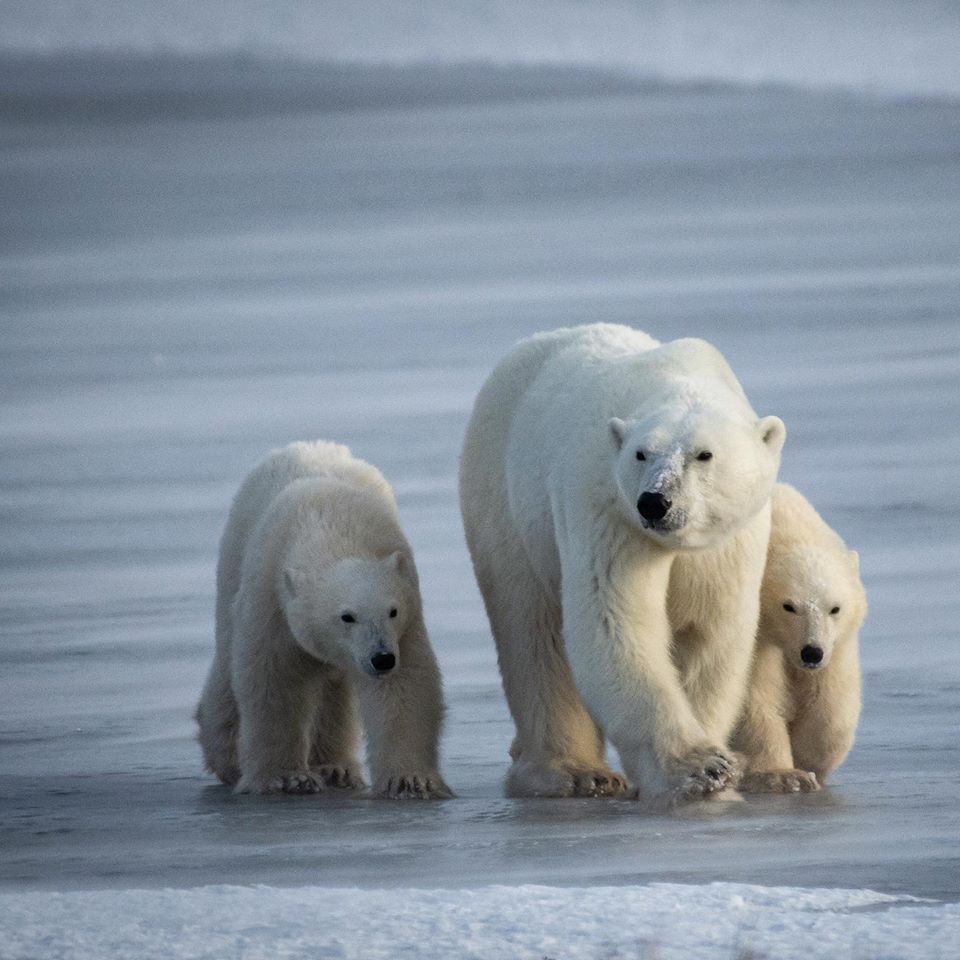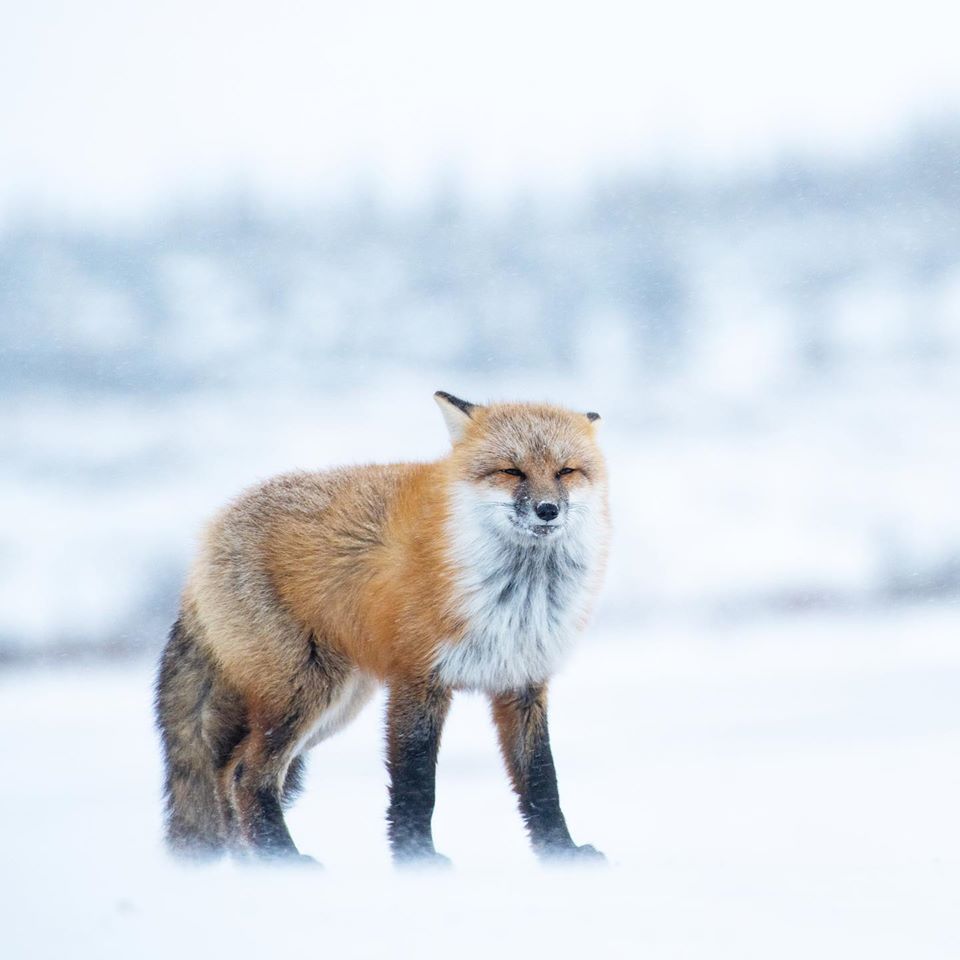November 9 – The winds died out overnight and the morning temperatures were still cold, just below 0°F. Without the windchill, however, the air felt mild relative to the past several days. Bear watchers reported the highlight of the day was spending the morning with two polar bears along the coast, which were alternating between feeding on kelp and visiting various tundra vehicles. The afternoon was slower for bears, though smaller creatures like American pine marten, ptarmigan and red fox were all spotted. There were more polar bears seen on the sea ice than on land today. The ice bears were viewed from both the tundra vehicles and helicopters. Helicopters reported that more ice had formed in the bay overnight. In just three days, the Hudson Bay has gone from being totally ice-free to having heavy coverage along the coast. The ice now reaches several miles out from the land and is broken up in places by open water.

A polar bear and two coys peruse the ice of the Hudson Bay. Discover Churchill photo.
By mid-afternoon, strong winds kicked up from the northwest, causing temperatures to fall. About that time, folks from town gathered at the Polar Bear Holding Facility to watch the release of a sow and two yearling cubs. These bears were flown by helicopter further north and away from town, where they can’t get into any more mischief. With so many locals present, the conversation naturally turned to the quickly changing ice conditions. There were many hopeful comments about how early freeze-ups have occurred in the past during bear season, only to have the ice blown back out by strong winds several days later.

A mom and cub polar bear keep a watchful eye on the tundra. Discover Churchill photo.
November 10- Today was extremely cold with a high of -27°F. Windchill made it feel more like -35°F, and the strong, cold winds persisted throughout the day. Conditions alternated between cloudy and foggy, with periodic whiteouts and blowing snow. The weather made for tough bear viewing. Bear watchers found one bear on the eastern side of the Churchill Wildlife Management Area. It was present all day, resting and rolling around to clean its coat. Many smaller animals were encountered by the tundra vehicles, including Arctic fox, red fox and ptarmigan. A real highlight for some travelers was a sighting of an ermine that had just killed a lemming. It appears from shore that the ice has consolidated more since yesterday. Helicopters were unable to corroborate, however, since they were grounded due to the high winds. Southern winds are expected soon—this often blows the ice out, bringing polar bears back to shore.

A red fox in the wind and cold in Churchill. Discover Churchill photo.
November 11 – Cold temperatures dominated again today, though, at only -16°F, it felt mild compared to previous days due to less windchill. Winds have shifted to come from the west. Helicopters were back in the skies this morning and pilots reported several polar bears on the ice. Polar bear cubs and a seal kill stole the show, along with a moose cow and calf near the shoreline. By early afternoon, helicopters were reporting that the ice had pushed away from the shore, and polar bears were spotted on land in various locations. From the tundra vehicles, a few bears were observed on the ice from Halfway Point early in the morning, best seen with spotting scopes. By late morning, the tundra machines made it out to Gordon Point to find a sub-adult bear. They watched it for hours as it ate kelp and walked among the vehicles. A red fox was seen on the tundra by several groups, a snowy owl was spotted from the Tundra Lodge, and there have been many red and silver fox sightings right in town. Winds are expected to shift to arrive from the south overnight, and local chatter is that this is the best-case scenario for potentially moving ice out of the region and driving more bears back to shore.

